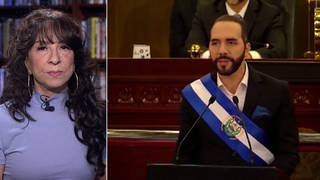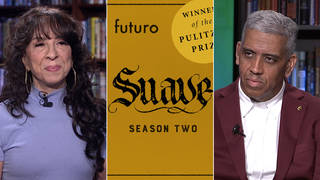
By Amy Goodman with Denis Moynihan
In recent weeks, radiation levels have spiked at the Fukushima nuclear power reactors in Japan, with recorded levels of 10,000 millisieverts per hour (mSv/hr) at one spot. This is the number reported by the reactor’s discredited owner, Tokyo Electric Power Co., although that number is simply as high as the Geiger counters go. In other words, the radiation levels are literally off the charts. Exposure to 10,000 millisieverts for even a brief time would be fatal, with death occurring within weeks. (For comparison, the total radiation from a dental X-ray is 0.005 mSv, and from a brain CT scan is less than 5 mSv.) The New York Times has reported that government officials in Japan suppressed official projections of where the nuclear fallout would most likely move with wind and weather after the disaster in order to avoid costly relocation of potentially hundreds of thousands of residents.
“Secrecy, once accepted, becomes an addiction.” While those words could describe how the Japanese government has handled the nuclear catastrophe, they were said by atomic scientist Edward Teller, one of the key creators of the first two atomic bombs. The uranium bomb dubbed “Little Boy” was dropped on Aug. 6, 1945, on the city of Hiroshima, Japan. Three days later, the second, a plutonium bomb called “Fat Man,” was dropped over the city of Nagasaki, Japan. Close to a quarter-million people were killed by the massive blasts and the immediate aftereffects. No one knows the full extent of the death and disease that followed, from the painful burns that thousands of survivors suffered to the later effects of radiation sickness and cancer.
The history of the bombing of Hiroshima and Nagasaki is itself the history of U.S. military censorship and propaganda. In addition to the suppressed film footage, the military kept the blast zones off-limits to reporters. When Pulitzer Prize-winning journalist George Weller managed to get in to Nagasaki, his story was personally killed by Gen. Douglas MacArthur. Australian journalist Wilfred Burchett managed to sneak in to Hiroshima not long after the blast and reported what he called “a warning to the world,” describing widespread illnesses as an “atomic plague.” The military deployed one of its own. It turns out that William Laurence, The New York Times reporter, was also on the payroll of the War Department. He faithfully reported the U.S. government position, that “the Japanese described ‘symptoms’ that did not ring true.” Sadly, he won the Pulitzer Prize for his propaganda.
Greg Mitchell has been writing about the history and aftermath of Hiroshima and Nagasaki for decades. On this anniversary of the Nagasaki bombing, I asked Mitchell about his latest book, “Atomic Cover-Up: Two U.S. Soldiers, Hiroshima and Nagasaki, and The Greatest Movie Never Made.”
“Anything that nuclear weapons or nuclear energy touches leads to suppression and leads to danger for the public,” he told me. For years, Mitchell sought newsreel footage shot by the U.S. military in the months following the atomic blasts. Tracking down the aging filmmakers, and despite decades-old government classification, he was one of the journalists who publicized the incredible color film archives. As part of the U.S. Strategic Bombing Survey, the film crews documented not only the devastation of the cities, but also close-up, clinical documentation of the severe burns and disfiguring injuries suffered by the civilians, including children.
In one scene, a young man is shown with red, raw wounds all over his back, undergoing treatment. Despite the massive burns and being treated months late, the man survived.
Now 82, Sumiteru Taniguchi is director of the Nagasaki Council of A-Bomb Sufferers. Mitchell found recent comments from Taniguchi in a Japanese newspaper linking the atomic bombing to the Fukushima disaster:
“Nuclear power and mankind cannot coexist. We survivors of the atomic bomb have said this all along. And yet, the use of nuclear power was camouflaged as ‘peaceful’ and continued to progress. You never know when there’s going to be a natural disaster. You can never say that there will never be a nuclear accident.”
In a poignant fusion of the old and new disasters, we should listen to the surviving victims of both.
Amy Goodman is the host of “Democracy Now!,” a daily international TV/radio news hour airing on more than 950 stations in North America. She is the author of “Breaking the Sound Barrier,” recently released in paperback and now a New York Times best-seller.
© 2011 Amy Goodman











Media Options